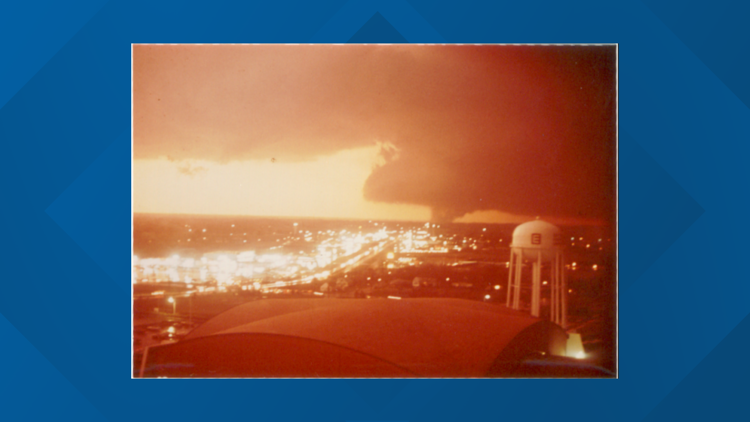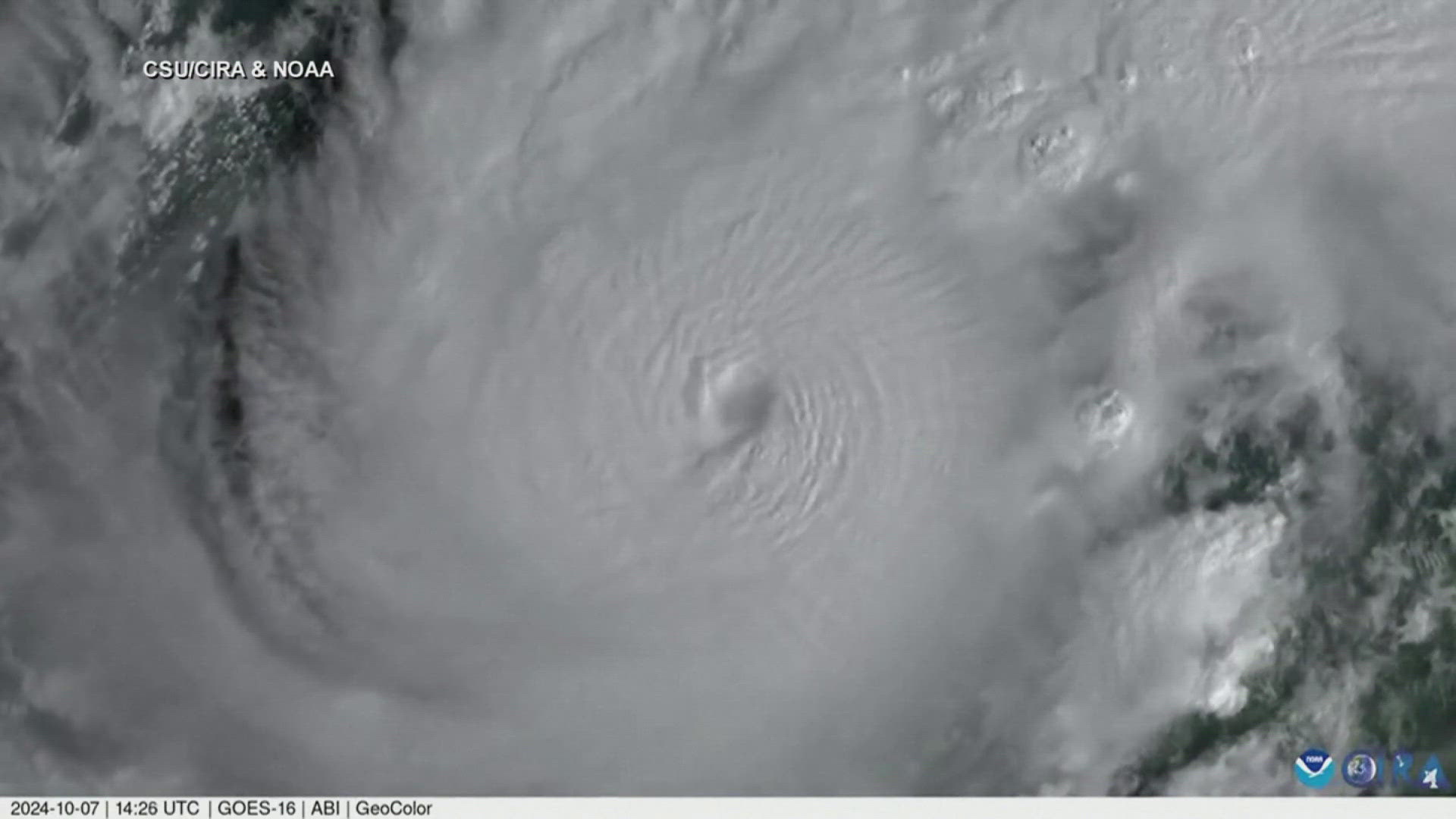LOUISVILLE, Ky. — Tornadoes are one of the most destructive, fascinating, and awe-inspiring weather phenomena on the planet. On average, over a thousand tornadoes occur in the United States each year, more than any other country globally. For decades tornadoes were highly unpredictable and poorly understood. Casualties could occur hundreds at a time and warning lead-times were extremely small. Thanks to advancements in technology, tornadoes are better understood today than at any other point in history.
Like hurricanes, tornadoes are ranked on a scale of 0-5 for their intensity. How is the strength of tornadoes determined? What changes have been made to that scale? Let’s dive in.
The Fujita Scale
In 1971, Dr. T. Theodore Fujita developed a scale to classify the damage caused by tornadoes. This was the first attempt to officially put tornado damage in some type of context (namely, the degree of damage to the wind intensity). The scale was used after tornado damaged had occurred. The photo below shows the original Fujita scale:

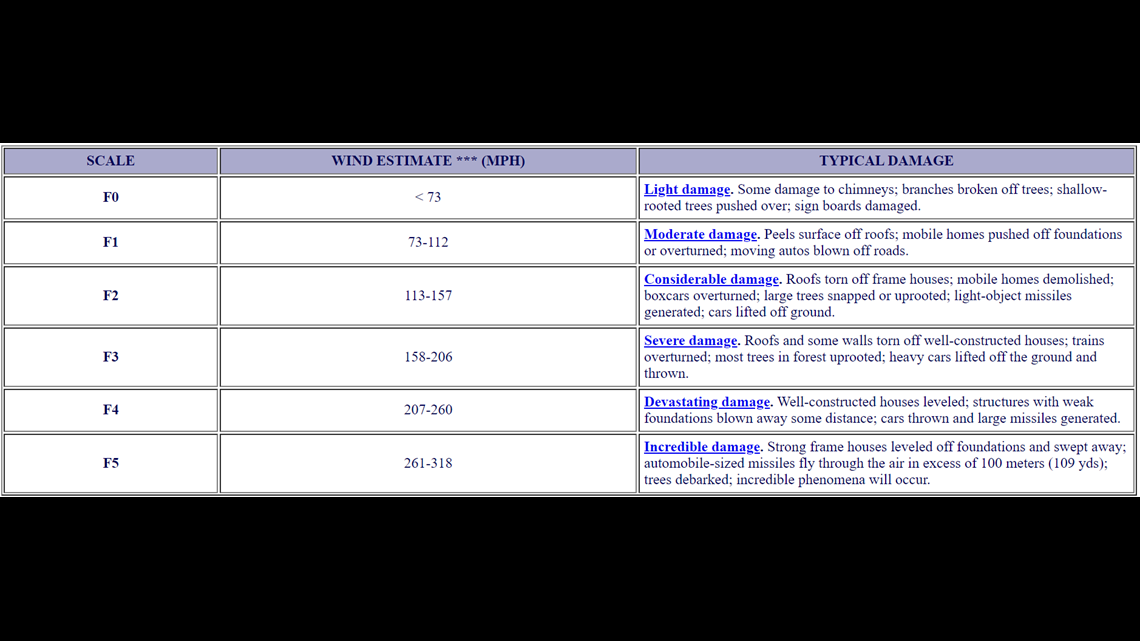
While a revolutionary development, the Fujita scale had its flaws. When the F-Scale was developed, there was little scientific data on wind damage, so the scale served more as a general roadmap for damage survey. According to the Storm Prediction Center (SPC), “wind speeds on the original F scale have never been scientifically tested and proven.” This means that the wind speeds were guesses based on the damage caused to buildings or vegetation. This is a problem because it didn’t consider structural stability. A building could be completely destroyed and the tornado is classified as an F4, but in reality the tornado may have been significantly weaker because said building was old or poorly built. Just because the roofs of two buildings were blown off does not mean the same wind speed was experienced by both.
Additionally, damage surveys were done by humans and even the most seasoned meteorologists and engineers could look at the same path of destruction but come up with different estimates for tornado strength. It was a subjective task, but the F-scale was the only tool available for tornado ratings for over 30 years.

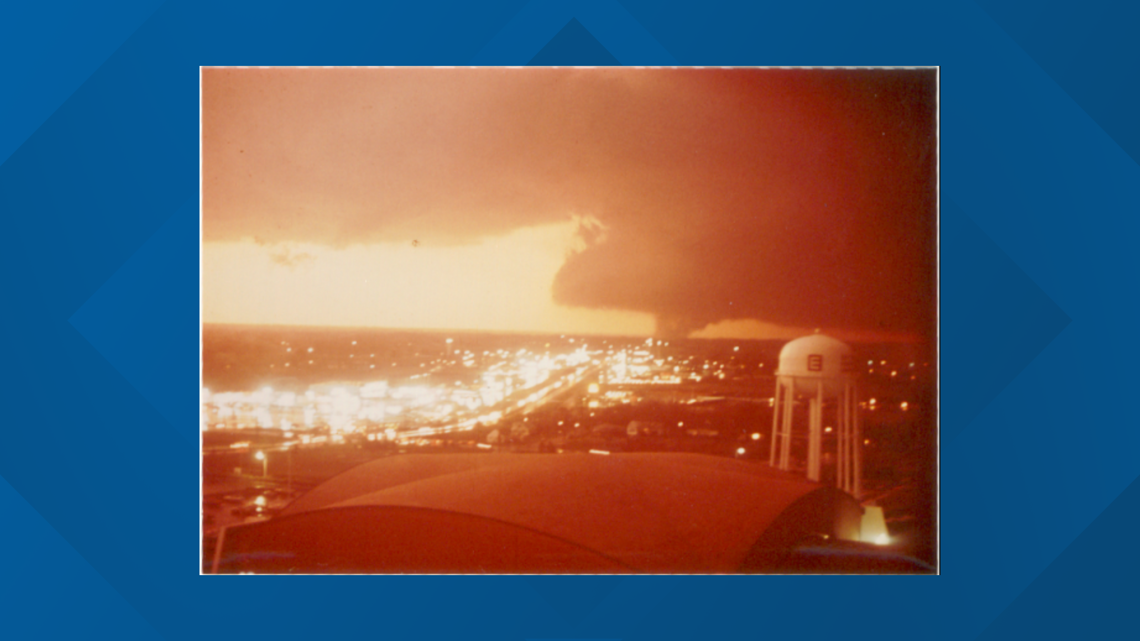
F12
While the F- (and EF-) scale used for tornadoes top out at F5, the scale technically went all the way up to F12. That’s Mach 1 speed (738 miles per hour). Clearly, there have been no recorded storms on earth that have ever produced wind speeds that fast! Fujita based the tornado rating scale from the Beaufort wind scale, whose upper end is at the bottom end of a category 1 hurricane. He did a lot of complicated math to come up with his wind speeds, then arbitrability applied some of those numbers to his scale.

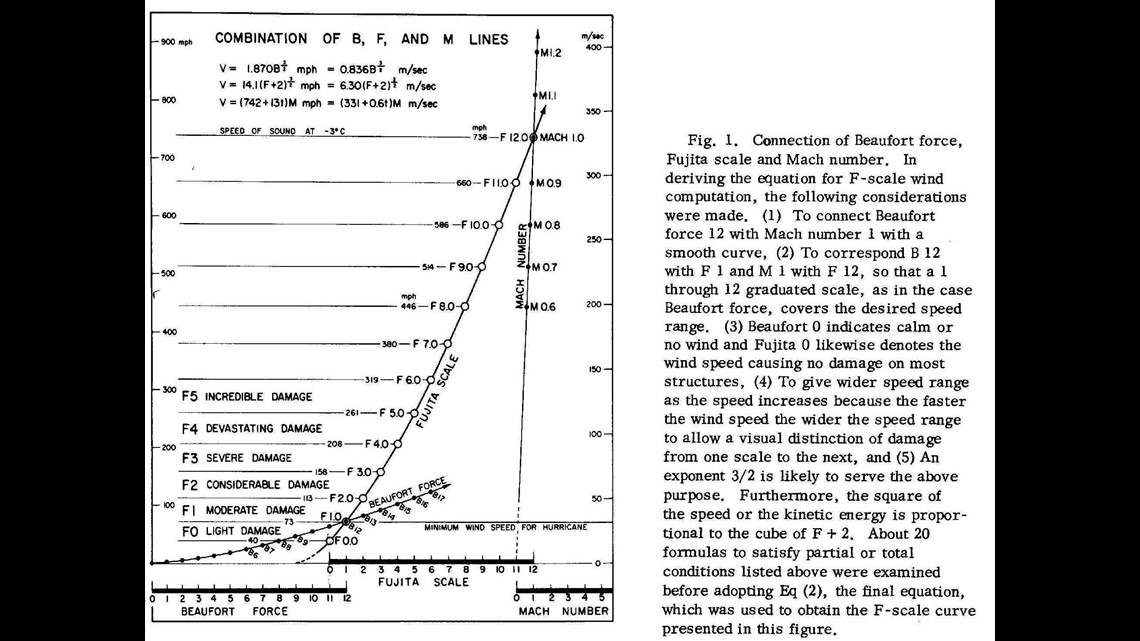
The Enhanced Fujita Scale
As years passed meteorologists became more aware of shortcomings of the F-scale. It became apparent that the broad-stroke guidelines of Fujita’s original work simply weren’t practical (and Fujita himself later acknowledged that changes were needed). The Enhanced-Fujita (EF) Scale formally replaced the F-Scale in February 2007. The difference? The EF-scale uses 28 damage indicators to determine tornado intensity. It’s also a lot more precise with estimations being done on a building-by-building basis. The new scale is as follows:

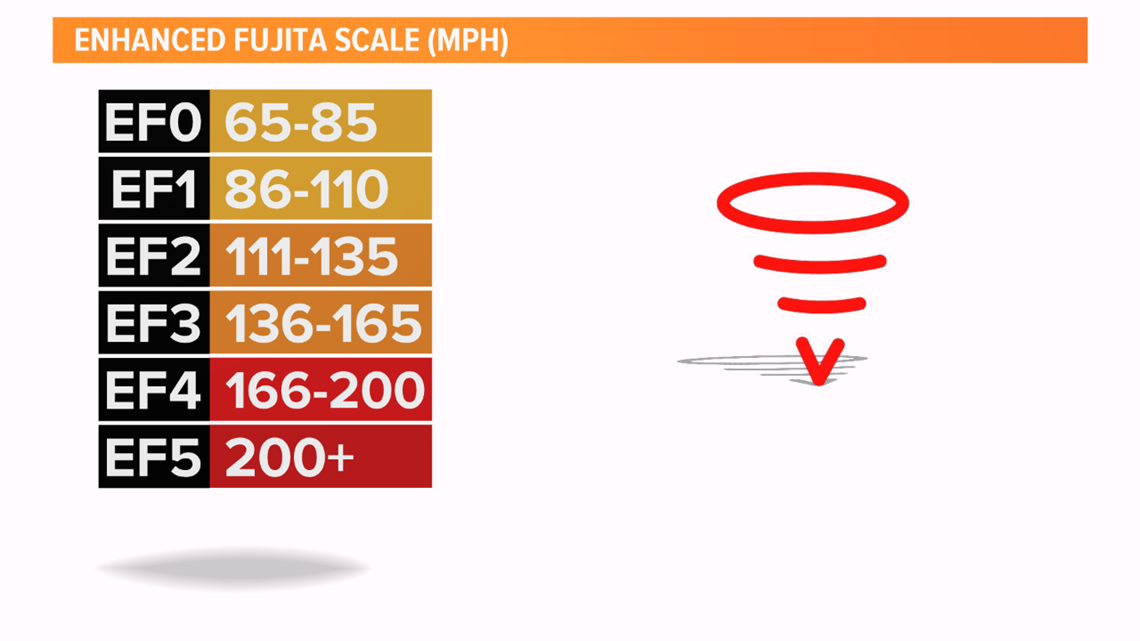
The EF-scale also accounts for construction quality and groups certain types of structures and trees together (for example, “low-rise buildings” being 1-4 stories, “mid-rise buildings” having 5-20 stories, etc). National Weather Service storm damage surveyors now have access to the standards while out in the field.
Scientists and engineers collaborated for years and even concluded that even the wind speeds on the F-scale were too high for tornadoes classified as F3 or higher. An F5 tornado was estimated to have wind speeds of 261-318 mph. The EF scale dramatically reduced the wind speeds for the highest tornado rating with EF5 tornadoes considered to have wind speeds greater than 200 mph. Scientists and engineers decided that damage described by an F5 tornado could be met by wind speeds of “only” 200 mph or greater. This is why wind speeds for EF5 is open-ended as a maximum wind speed isn’t necessary.
The next few photos are damage surveys from the historic 2013 Moore, Oklahoma tornado.

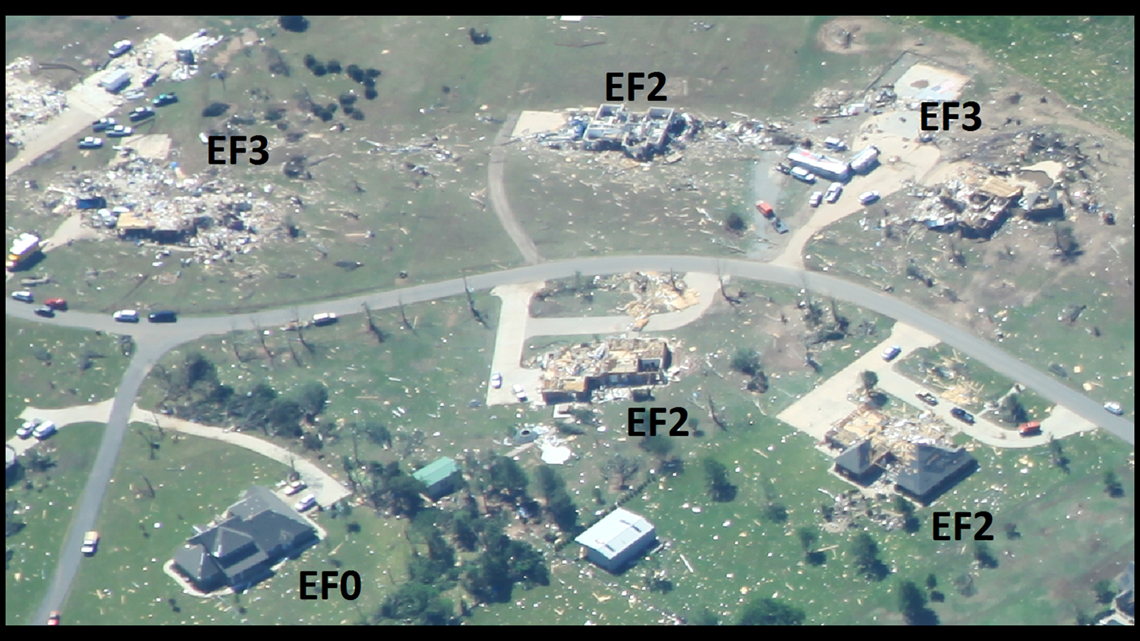

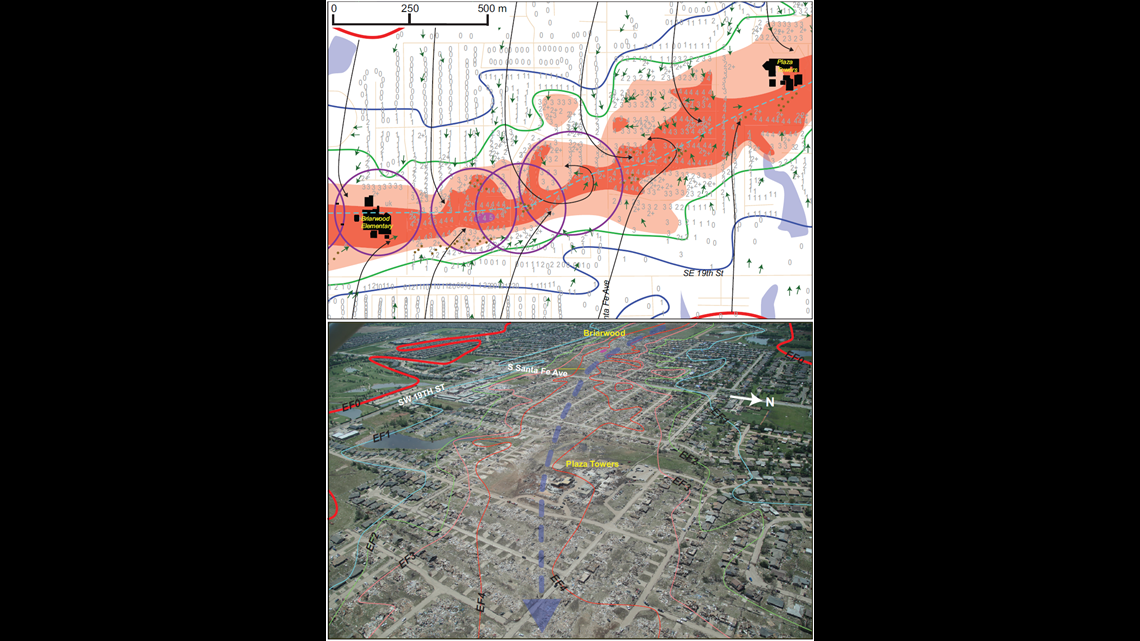
This change has led to dramatically fewer max-ranked tornadoes. The destruction of a normal American house would have been considered an F5 on the original ranking system, but “only” an EF4 on the new one. That said, the EF-scale still uses the damage descriptors of the F-scale, albeit with a few modifications. Even today, structural engineers, forestry officials, meteorologists, and others continue to consider ways to improve these damage indicators.

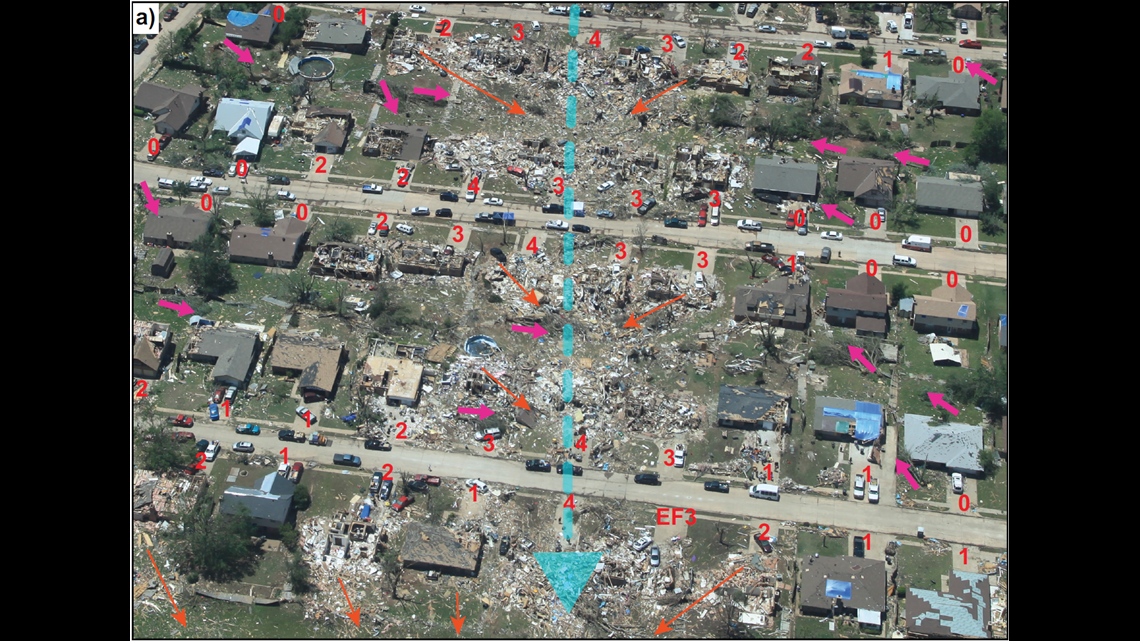

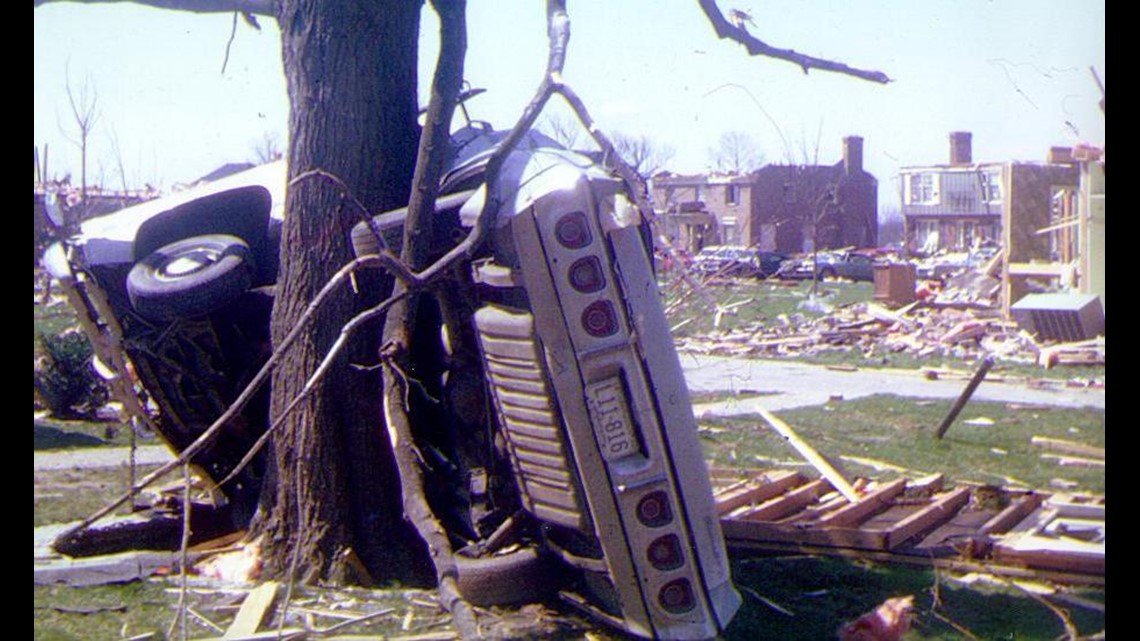
Kentuckiana has had its fair share of large, deadly, and destructive tornado. The National Weather Service Louisville office has a webpage showing damage during the historic 1974 super outbreak that ravaged the Ohio Valley.
Significant improvements have been made in ranking tornadoes after their damage occurs, and real-time forecasting of tornadoes has come a long way from even 20 years ago. As researchers gather more information on these deadly forces of nature, our understanding, post-analysis, and forecasting will continue to grow.
Meteorologist Alden German
Facebook: Facebook.com/AldenGermanWX | Twitter: @WXAlden

